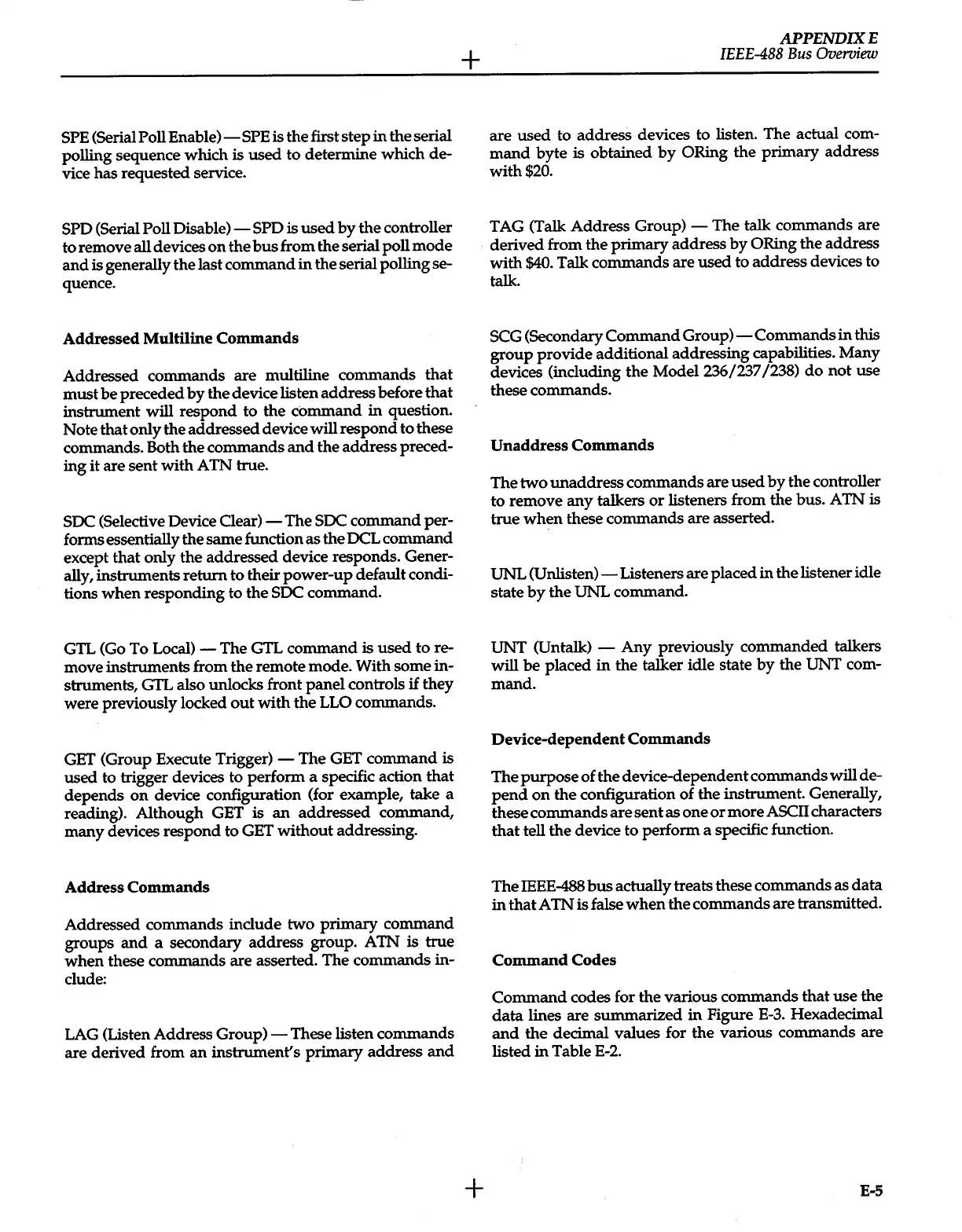SPE
(Serial
Poll
Enable)-
SPE
is the first step in the serial
polling sequence which is used to determine which de-
vice has requested service.
SPD
(Serial Poll
Disable)-
SPD is used
by
the controller
to remove all devices
on
the
bus
from the serial poll mode
and
is generally the last command in the serial polling se-
quence.
Addressed
Multiline
Commands
Addressed commands are multiline commands that
must be preceded
by
the device listen address before that
instrument
will
respond to the command
in
question.
Note that only the addressed device
will
respond to these
commands. Both the commands
and
the address preced-
ing it are sent with A TN true.
SOC
(Selective Device
Clear)-
The
SOC command per-
forms essentially the same function as the OCL
command
except that only the addressed device responds. Gener-
ally, instruments return to their power-up default condi-
tions when responding to the
SOC
command.
GTL
(Go To Local)
-The
GTL
command is used to re-
move instruments from the remote mode. With some in-
struments,
GTL
also unlocks front panel controls
if
they
were previously locked
out
with the
LLO
commands.
GET
(Group Execute Trigger) - The
GET
command is
used to trigger devices to perform a specific action that
depends
on
device configuration (for example, take a
reading). Although
GET
is
an
addressed command,
many devices respond to
GET
without addressing.
Address
Commands
Addressed commands include two primary command
groups
and
a secondary address group. A TN is true
when these commands are asserted. The commands in-
clude:
LAG (Listen Address
Group)-
These listen commands
are derived from
an
instrument's primary address
and
+
+
APPENDIX£
IEEE-488
Bus
Overview
are used to address devices to listen. The actual com-
mand
byte is obtained
by
ORing the primary address
with$20.
TAG (Talk Address Group)
-The
talk commands are
derived from the primary address
by
ORing
the address
with
$40.
Talk commands are used to address devices to
talk.
SCG
(Secondary Command Group)
-Commands
in
this
group provide additional addressing capabilities. Many
devices (including the Model236/237 /238)
do
not use
these commands.
Unaddress
Commands
The two unaddress commands are used
by
the controller
to remove any talkers
or
listeners from the bus. A TN is
true
when
these commands are asserted.
UNL
(Unlisten)-
Listeners are placed in the listener idle
state
by
the UNL command.
UNT (Untalk) - Any previously commanded talkers
will
be
placed
in
the talker idle state
by
the UNT com-
mand.
Device-dependent
Commands
The purpose of the device-dependent commands
will
de-
pend
on
the configuration of the instrument. Generally,
these commands are sent as one
or
more ASCII
characters
that tell the device to perform a specific function.
The
IEEE-488
bus
actually treats these commands as data
in
that A TN is false
when
the commands are transmitted.
Command
Codes
Command codes for the various commands that use the
data lines are summarized
in
Figure
E-3.
Hexadecimal
and
the decimal values for the various commands are
listed in Table
E-2.
E-5
